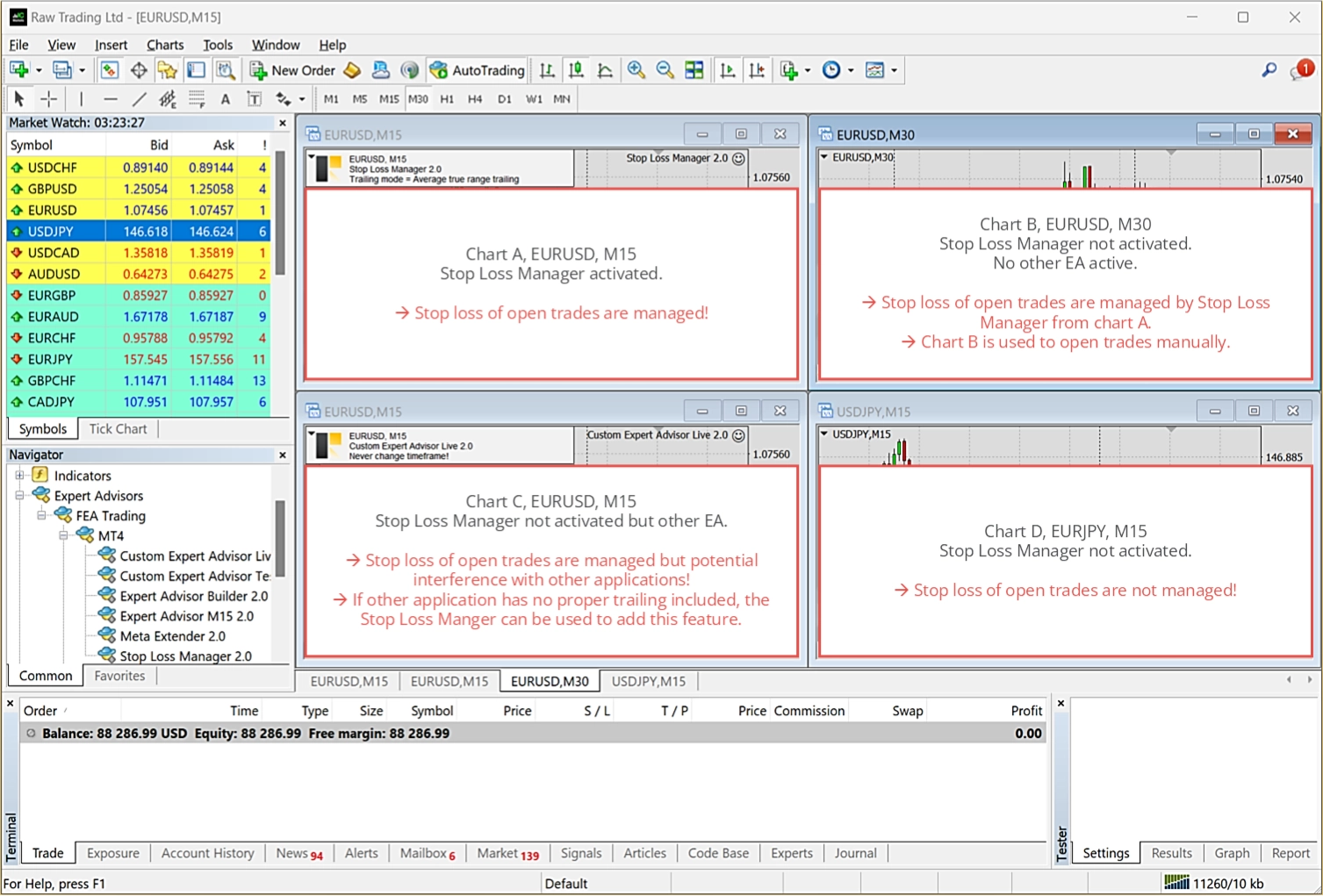Influenced orders
Validity
All products are designed to manage only the trades they open. However, the Stop Loss Manager is an exception to this rule. It was specifically designed to handle all trades and their respective stop losses from a specific symbol, regardless of how the trade was initiated. This feature provides valuable capabilities, such as managing stop losses on the go. To understand what this means, consider the following illustration.

Chart A is where the Stop Loss Manager is executed. Naturally, all trades opened in this EURUSD M15 chart are managed by the Stop Loss Manager according to its settings. All available trailing methods, except the breakeven option, have a timeframe prefix. This means that the stop loss trailing characteristic in M15 will differ from that in the M30 timeframe. For instance, an ATR indicator value in M15 significantly differs from that in M30. Chart B displays the same symbol but in an M30 timeframe.
If a new trade is opened in Chart B, the Stop Loss Manager from Chart A will manage the initial stop loss and its trailing. This would occur in the M15 timeframe since the Stop Loss Manager in Chart A is applied on an M15 chart. This implies that only one Stop Loss Manager per symbol should be activated. Executing it in the timeframe where trades are intended to be opened and closed is recommended.
This feature can protect another application that opens trades in the same symbol and timeframe. For example, suppose in Chart C, a third-party expert advisor is running without proper stop loss management, like a Martingale trading system. In this case, the Stop Loss Manager will manage the stop loss. It's important to note that this usage won't make any other trading system profitable, but it can help protect against worst-case scenarios. Please remember that the Stop Loss Manager cannot be responsible for how other trading systems will open and close trades.
Chart D in this example is configured with USDJPY; thus, the Stop Loss Manager from Chart A has no effect!